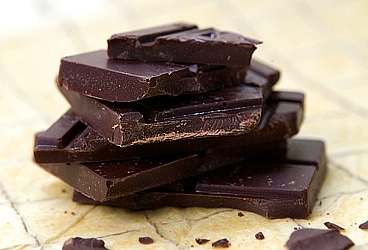Best Chocolate In The Caribbean
This surely can't be right. I climb out of the taxi, stretching my limbs after a hair-raising negotiation of the hairpin bends and vertiginous inclines of Grenada's single-track mountain highway. The humble building outside which I've just been deposited doesn't look much like a factory, let alone one at the forefront of a culinary revolution. But the gaily painted facade with hand-drawn lettering is unmistakable — as is the inescapably rich, chocolaty aroma that hangs tantalizingly in the midmorning air.
Despite its unassuming appearance, this is, in fact, the headquarters of the famous Grenada Chocolate Company, a progressive, small-scale chocolate manufacturer that produces some of the world's finest and most extraordinary dark chocolate.
The Caribbean has a long association with chocolate, whose main ingredient comes from the seeds (cocoa beans) of the region's cacao tree. While driving across the island, I'd seen a great many of the trees growing in large, shady plantations alongside mango and nutmeg trees. Their bright-yellow seed pods were easy to pick out against the deep-green foliage.
Grenada's hot and humid climate is perfect for growing cocoa, but these same factors paradoxically make chocolate production incredibly difficult. Chocolate is such a temperamental entity that even just slight changes in temperature or humidity can affect its flavor. To find a viable chocolate producer actually located in a cocoa-growing region is therefore extremely rare — and for that producer to be successfully making a market-leading, high-grade product, all the way from bean to bar under such unlikely conditions, is little short of miraculous.
Grenada Chocolate's almost mythical reputation is based on its complex flavor and rich intensity, resulting in a unique taste sensation that's second to none. This distinctive palate is partly due to the sheer quality of Grenada's fine- flavored cocoa, sourced from a rare subspecies of tree known for its beans' deep and many-layered chocolate essence. It's also organic, so the beans are grown locally without using artificial chemicals that can influence the development of the cocoa's flavor.
But the unusual, small-batch production process also plays a key role, and it was this that I had come to discover for myself. As I walk up to the entrance, I'm met by a charismatic, dreadlocked guy who appears as if from nowhere with a beaming smile and a welcoming handshake. As luck would have it, this is no ordinary tour guide. Edmond Brown is a native Grenadian and one of the Grenada Chocolate Company's three founding partners, so there could be nobody more qualified to talk me through the machinations of chocolate making.
I think of those yellow bean pods dotting the island as Edmond explains how the cocoa is grown by a cooperative of local farmers, then fermented and dried on the premises. Careful control of this all-important process ensures that the resulting flavor develops its full scope and intensity. The dried beans are then roasted — and it's here that I realize what a cottage industry this operation really is. The single roaster is no larger than the average household oven, which means the factory can only process three 400-pound batches of cocoa each week.
Besides being small, the roaster also looks pretty old. Antique, even. Edmond confirms that many of the factory's machines are indeed refurbished antiques, masterminded by the company's two other founders, Americans Mott Green and Doug Browne. It was Mott (a New Yorker) who discovered Grenada's potential for superlative chocolate while on one of his regular "chill-out" trips to the island.
Despite having no formal training as a chocolatier, Mott nevertheless forged ahead with his ideological plan to give something back by creating a grass-roots enterprise producing single-origin, ethical and organic chocolate in the most sustainable way possible. He founded the company in 1999, using solar power to fuel recycled machines that process fairly traded cocoa grown literally on the factory's doorstep. It's a textbook example of sustainability in action — and one that Mott hopes will be imitated elsewhere to help break the long-established status quo that ultimately exploits cocoa farmers.
Continuing the tour, I watch as the cocoa is ground, mixed with sugar (organic, of course), refined and tempered before finally being poured into molds, cooled and wrapped by hand in the signature Grenada Chocolate Company packaging (designed by a local artist in vibrant, parrot-bright Caribbean colors). And then ... voilà! I'm handed a bar of the finished product. It's so beautifully wrapped that for a moment I don't want to damage it. Then I decide to gingerly peel back the foil to reveal the cool dark chocolate beneath.
"The better it snaps, the better the chocolate," confides Edmond, encouraging me to break a corner from the bar. It comes away with a satisfying snap and refuses to melt on my fingers — another indicator of its extreme quality. The chunk of chocolate, darker than ebony, releases a wave of rich, luscious flavor that lingers on my tongue long after the last piece has been swallowed. It is doubtless the most delicious chocolate that I have ever tasted.
Back on the road, oblivious to the terrifying chicanery and the breathtaking beauty of Grenada's montane rainforests, I contemplate the armful of chocolate bars that I've bought as gifts for friends at home. I only hope I can make it back without eating them all.
